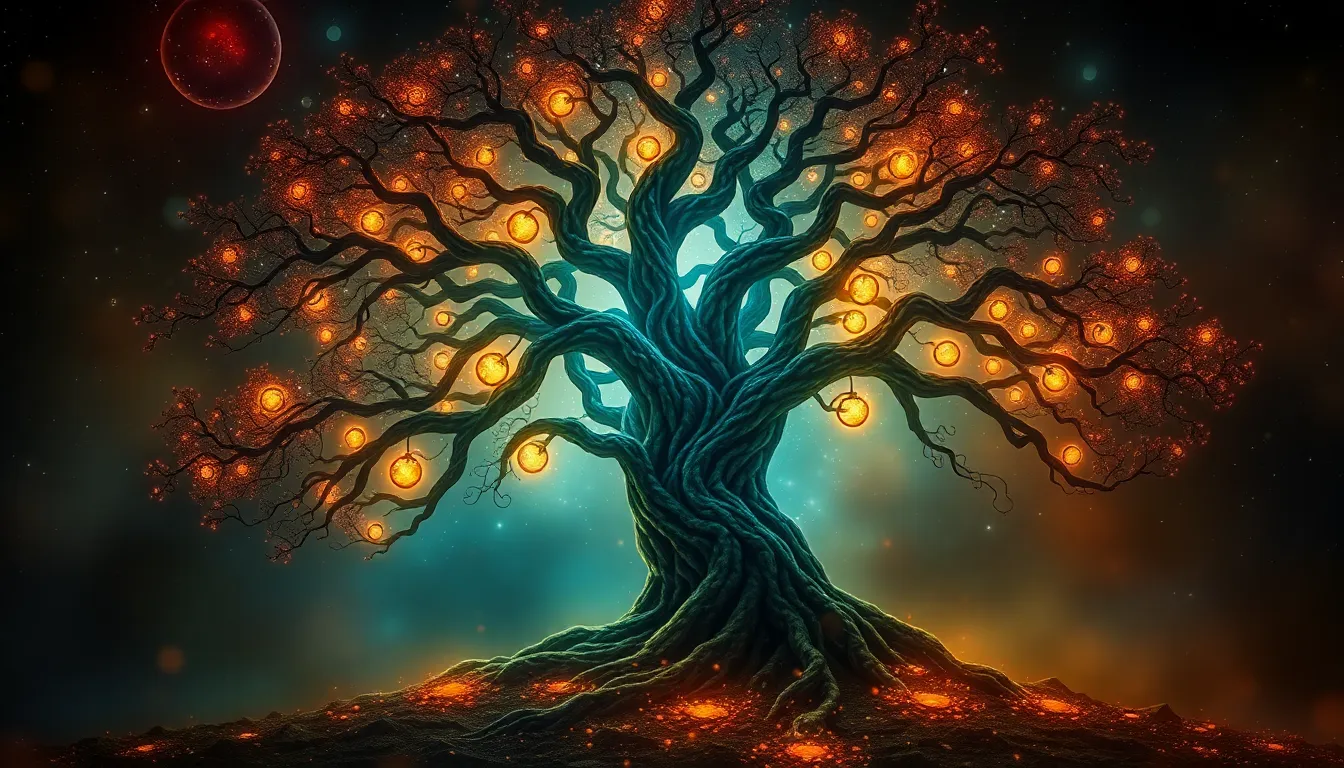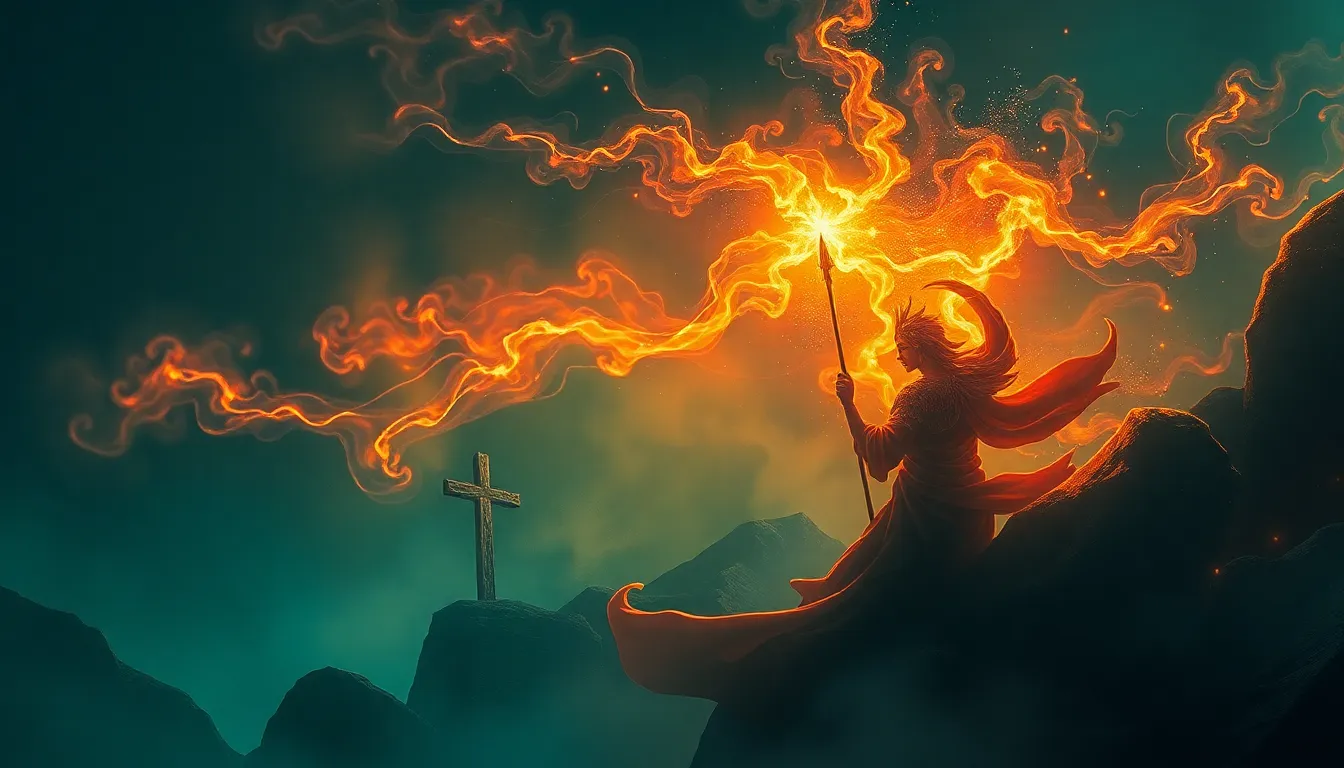The Enigmatic Elder Tree: Myths of Death and Rebirth
I. Introduction
The Elder Tree, scientifically known as Sambucus, has long been a significant symbol in various cultures around the world. Its historical importance is interwoven with folklore, traditional medicine, and ecological significance. The Elder Tree is not just a plant; it represents a complex tapestry of myths and beliefs that reflect human perspectives on life, death, and rebirth.
Myths serve as a lens through which we can understand different cultural views regarding existential themes, particularly death and rebirth. The Elder Tree, often associated with these themes, encapsulates the duality of life’s cycles. This article seeks to explore the rich symbolism of the Elder Tree, examining its role in folklore, its associations with death and regeneration, and its significance in human culture.
II. The Elder Tree in Folklore and Mythology
A. Origins and historical context of the Elder Tree
The roots of Elder Tree mythology can be traced back to various ancient civilizations. In Europe, the Elder Tree was often revered and surrounded by numerous myths and superstitions. It was believed that the tree had protective qualities, warding off evil spirits and granting a safe passage to the afterlife.
B. The Elder in various cultural mythologies
Across different cultures, the Elder Tree holds unique significance:
- Celtic Mythology: The Elder was associated with the goddess of death and rebirth, often seen as a gateway to the Otherworld.
- Norse Mythology: The Elder Tree was linked to the goddess Freyja, symbolizing fertility and renewal.
- Slavic Folklore: In Slavic traditions, the Elder was believed to house the spirits of ancestors, providing a connection between the living and the dead.
C. Symbolic meanings associated with the Elder Tree
The Elder Tree is rich in symbolism, often embodying the following themes:
- Protection and safety
- Death and the afterlife
- Regeneration and renewal
- Connection to the spirit world
III. The Elder Tree as a Symbol of Death
A. Associations with death and the underworld
The Elder Tree has strong associations with death and the underworld. In various cultures, it was believed that the Elder’s hollow wood served as a portal to the afterlife, making it a significant element in funerary practices.
B. Rituals involving the Elder Tree in funerary practices
In certain traditions, branches of the Elder Tree were used in funerals. For example, it was customary in some European cultures to place Elder flowers on graves as a symbol of respect and remembrance for the deceased.
C. Folkloric tales that highlight death-related symbolism
Folklore is rich with stories involving the Elder Tree. One popular tale describes how planting an Elder Tree near a home protects the inhabitants from death’s approach, while another recounts how the tree’s flowers were thought to carry the souls of the deceased.
IV. The Elder Tree as a Symbol of Rebirth
A. Connections to regeneration and renewal in nature
Despite its associations with death, the Elder Tree is equally a symbol of rebirth. Its ability to flourish in various environments and regenerate quickly after being cut down speaks to the theme of renewal.
B. Myths that depict the Elder Tree as a source of life
In many cultures, the Elder Tree was seen as a giver of life. Its berries and flowers were utilized in various remedies, symbolizing the life-giving properties of nature.
C. The cycle of life and death as represented by the Elder Tree
The Elder Tree embodies the cycle of life and death. It serves as a reminder that from death comes new life, as seen in the way the tree provides sustenance for various creatures and plants in its ecosystem.
V. The Elder Tree in Herbal Medicine and Healing
A. Traditional uses of Elder in folk medicine
The Elder Tree has been used for centuries in folk medicine. Various parts of the tree, including the flowers and berries, were utilized to treat ailments such as colds, flu, and inflammation.
B. The tree’s role in healing practices related to death and rebirth
In many cultures, the Elder Tree was believed to have protective properties against death. Herbalists often used its remedies to heal the living, reinforcing the connection between life and death.
C. Modern applications of Elder in herbal remedies
Today, Elderberry supplements and syrups are popular for their immune-boosting properties. The resurgence of interest in herbal medicine has brought the Elder Tree back into the spotlight for its potential health benefits.
VI. The Relationship Between Humans and the Elder Tree
A. The Elder Tree in agricultural practices and landscape
The Elder Tree has been integrated into agricultural landscapes, often planted near homes for its beneficial properties. Its ability to attract pollinators makes it a valuable asset in farming.
B. Cultural rituals and celebrations involving the Elder
Various festivals celebrate the Elder Tree, particularly during the summer months when it blooms. Communities gather to create elderflower drinks and celebrate the harvest, symbolizing the connection between nature and human life.
C. Stories of human interaction and reverence for the Elder Tree
Folklore is filled with stories that highlight the reverence for the Elder Tree. Many cultures view it as sacred, often planting it in gardens and near homes to invite protection and prosperity.
VII. Regional Variations in Elder Tree Myths
A. Comparative analysis of Elder Tree myths across different cultures
While common themes exist, there are significant regional variations in Elder Tree myths. In Celtic traditions, it is often seen as a guardian, whereas, in Slavic cultures, it embodies the ancestors’ spirits.
B. Unique regional interpretations of death and rebirth associated with the Elder
In Scandinavia, the Elder is linked to fertility and the life force, while in some Native American cultures, it is seen as a protector of the earth’s energy.
C. The influence of geography on Elder Tree symbolism
The geographical distribution of the Elder Tree has influenced its symbolism. Areas where the tree thrives often incorporate it into local myths, reflecting the environment’s impact on cultural beliefs.
VIII. The Elder Tree in Literature and Art
A. Representation of the Elder Tree in classical literature
The Elder Tree has appeared in various literary works, often symbolizing death, rebirth, and the passage of time. Classical authors used its imagery to evoke feelings of nostalgia and transformation.
B. Artistic depictions of the Elder Tree and its symbolic meanings
Artists throughout history have depicted the Elder Tree in paintings and sculptures, emphasizing its dual nature as both a harbinger of death and a source of life.
C. Modern interpretations and references in contemporary media
In contemporary media, the Elder Tree often symbolizes resilience and the interconnectedness of life, reflecting ongoing themes of environmental awareness and human connection to nature.
IX. Ecological Importance of the Elder Tree
A. Role of the Elder Tree in ecosystems and biodiversity
The Elder Tree plays a crucial role in its ecosystem, providing habitat and food for various species, including birds, insects, and mammals. Its flowers attract pollinators, making it essential for biodiversity.
B. Conservation efforts to protect Elder Trees and their habitats
As urbanization and deforestation threaten the Elder Tree’s habitat, conservation efforts have become increasingly important. Organizations are working to protect these trees and promote their growth in natural areas.
<h3


